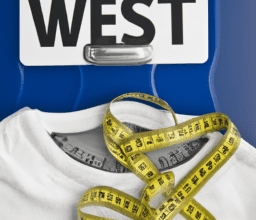
[ad_1] 
Even with a background in social work, Soda Health CEO and cofounder Robby Knight said it was a struggle to help his father set up supplemental benefits when he became eligible for Medicare.
“What really hit me hard there was that in spite of what we do to make our lives better and really affect health more broadly in the U.S., the challenge is we still have a lot of people that are experiencing very foundational challenges in their lives every day,” he said.
Last year, Soda launched with the goal of making it easier to access benefits for healthy foods, over-the-counter medications and transportation. The startup recently raised $25 million in a Series A funding round.
Knight sat down with MobiHealthNews to discuss how Soda’s model works, why beneficiaries often can’t access these programs, and how the company plans to use its Series A funds.
MobiHealthNews: What are some of the problems you’re seeing with accessing supplemental benefits as a Medicare Advantage or Medicaid member?
Robby Knight: It depends. It’s a patchwork of services. So you have anything from an over-the-counter catalog, where health plans send it in the mail to members each year. And as a part of that process, members identify what they want, fill out a form and mail it back. Utilization of that is abysmal, right? It’s not a great member experience. All the way from that, to call center base fulfillment, to retail base fulfillment. It’s really confusing on which retailers to use, and even what items are eligible.
So what happens is, for Medicare Advantage for OTC specifically, only 30% is being used. The other issue is that at some point, you don’t need more Tylenol. You don’t give a starving person a blanket, you give them food.
It’s a one-size-fits-all approach where people are just getting OTC and utilization is really low and engagement is low, because it doesn’t actually address the immediate needs people have in front of them.
MHN: Can you tell me a little bit about how Soda Health works, from both a patient perspective and a health plan perspective?
Knight: Health plans have subpopulations of members they want to provide these benefits to. We work with them to identify what benefits they should be offering most efficiently from their perspective and to make sure members have the most dollars that they need.
As a part of that process, we have what we call a flex card. So we send out member communication with that card — through our health plan partners — and then members receive that card and a welcome kit in the mail. Both physical mail and they also receive other notifications as well. The member then activates it and goes on to our member portal to identify what additional resources they are eligible for and then see how they can use their existing benefits in a far more easy and consumer-oriented way.
MHN: When you’re working with health plans to figure out what benefits they should be offering, how do you determine that?
Knight: One of the interesting things about the way this process currently works is it’s too often the sales pitch. And what we see in this space is, OTC is important. It is factually correct to say that if you’d have an OTC benefit or any benefit versus not having a benefit, you’re probably going to be healthier. The question is, what’s the actuarial value? And what’s the ROI [return on investment] associated with making certain trade-offs that a health plan has to make to manage their P&L [profit and loss statement] and help their members to improve their health outcomes?
And so we say, hey, health plan, based on the market in your region, and based on the types of members you have and their needs that we see here, these are the kinds of benefits packages that we come in on the front side and recommend to you. Here’s how the math works. And here’s how we can optimize everything else downstream to make sure, from a cost profile, what you’re doing is sustainable, it’s competitive in the market, and that it allows for additional funds that we unlock later, once we identify members’ needs that exist.
So we can be really flexible helping members when they have a housing issue or when they have a transportation issue. They’re not going to their annual wellness visit, because they can’t actually get to the doctor, because there’s no transportation. For us, it’s how we can identify what those points are, and make sure that the health plan most efficiently spends those resources to help that human being on an individualized basis.
MHN: You used to work at Walmart. How did that affect the development of Soda?
Knight: So I’d say two experiences came into the perspective that I have today. Number one, my experience as a social worker understanding really intimately the needs everyday people have, and that I experienced as well growing up.
In my time at Walmart, it was really helpful because it allowed me to understand scale and how different markets move. Walmart provided a really compelling understanding of the nuances of different business models, and how scale works in a way that no one else really can because of the purview that they have in the market.
MHN: So you just announced your $25 million Series A raise about a year after you launched. How do you plan to use that investment?
Knight: What we’re doing for our Series A is continuing to expand the organizations and retailers that we connect with, so that people can have places to use those cards, to access those resources and to identify new resources that they’re eligible for.
Source link






